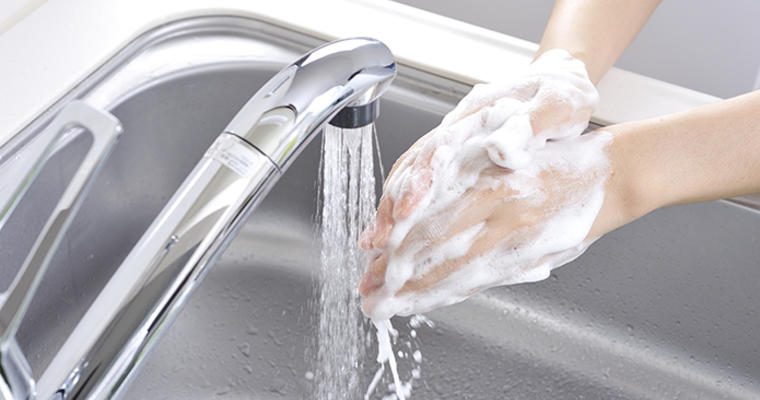Handwashing is the most important part of personal hygiene. It involves five simple, effective steps and, if done properly, the process should take approximately 30 seconds. Regular handwashing is one of the best ways to remove germs, avoid getting sick, and prevent the spread of germs to others.
Employers play a big part in proper hand washing as they must provide and maintain proper handwashing sinks for all employees. Components of a handwashing station must include a handwashing sink, hand soap (liquid, powder, or bar), a way to dry hands (disposable towels, continuous towel system, or hand dryer), and a trash receptacle.
5 Proper Handwashing Steps
- Wet your hands with running water as hot as you can comfortably stand (at least 100℉/ 38℃).
- Apply soap.
- Vigorously scrub hands and arms for at least 20 seconds. Clean under fingernails and between fingers.
- Rinse thoroughly under running water.
- Dry hands and arms with a single-use paper towel or warm-air hand dryer. Use a paper towel to turn off the faucet; use a paper towel to open the door.
It’s Important to Practice Proper Handwashing Before Work and After the Following Activities:
- Using the restroom
- Handling raw meat, seafood, or poultry (before and after)
- Touching your hair, face, or body
- Sneezing, coughing, or using a tissue
- Smoking, eating, drinking, or chewing gum or tobacco
- Handling chemicals that might affect the safety of the food
- Taking out garbage
- Clearing tables or bussing dirty dishes
- Touching clothing or aprons
- Handling money
- Touching anything else that may contaminate hands such as unsanitized equipment, work surfaces, or wash cloths
Resources
- Gordon Food Service customers can view more information about personal hygiene and handwashing tips on Gordon Experience.
- Download this handwashing poster




























